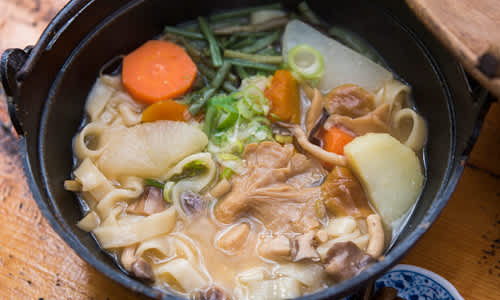
Yamanashi A culinary journey through fruitful fields
A Culinary Journey in Yamanashi
Nestled in the shadow of Mount Fuji, Yamanashi Prefecture is a land of breathtaking landscapes and vibrant culinary traditions. With its lush valleys and clear rivers, Yamanashi enjoys a temperate climate perfect for agriculture and viticulture.
Yamanashi is renowned for its exceptional fruit production, particularly its juicy peaches and grapes. The prefecture is a major hub for winemaking in Japan, with its Koshu grapes yielding some of the country's finest wines. Additionally, Yamanashi's fertile soil and abundant sunshine produce some of the sweetest and most flavorful fruits, including cherries and plums, which are celebrated in local farms and markets.
Beyond its fruits, Yamanashi is famous for its hearty Hoto noodles, a traditional dish featuring thick, chewy noodles served in a rich miso-based broth with seasonal vegetables. The region is also known for its tender Koshu beef, which is prized for its marbling and deep flavour, reflecting the meticulous care taken in local cattle farming.
Explore Yamanashi's culinary delights to experience its unique blend of tradition and natural beauty.
Hoto (Noodle soup)

What it is (Ingredients)
Hoto is a traditional noodle soup from Yamanashi, featuring thick, flat noodles made from wheat flour. The noodles are cooked in a rich miso-based broth, which often includes a variety of seasonal vegetables such as pumpkin, mushrooms, carrots, and leafy greens. The dish is known for its robust and comforting flavour, with the miso broth providing a savoury base that complements the chewy texture of the noodles and the sweetness of the vegetables.
History/Origin
Hoto has been a staple of Yamanashi cuisine for centuries, with many theories about its origins, one linking it to the samurai era. The famous samurai lord Takeda Shingen and his army are said to have enjoyed Hoto as a nutritious and easy-to-prepare meal during their expeditions. This dish has been popular for many years and symbolizes the resourcefulness and culinary ingenuity of the Yamanashi people. Hoto is known not only for its taste but also for its cultural and historical significance to the region.
Where to Eat
Hoto can be found in traditional restaurants, local eateries, and Ryokan (Japanese inns) throughout Yamanashi prefecture. While restaurants typically serve Hoto in individual hot pots, locals often prepare larger portions in communal pots for family-style dining at home.
When to Eat
Hoto is enjoyed year-round, but it is especially comforting during the colder months when its warm, hearty broth provides both nourishment and warmth. The dish is perfect for a family meal or a communal dining experience, where its rich flavours and satisfying portions can be fully appreciated.
Experience the heartwarming taste of Hoto and discover the rich culinary heritage of Yamanashi.
Shingen-mochi (Rice cake confection)

What it is (Ingredients)
Shingen-mochi is a traditional Japanese confection from Yamanashi, known for its delicate, chewy texture and subtly sweet flavour. This treat consists of soft rice cakes (mochi) made from glutinous rice, which are dusted with roasted soybean flour (Kinako) and served with a drizzle of Kuromitsu (black sugar syrup). The combination of tender mochi, nutty Kinako, and rich Kuromitsu creates a harmonious balance of textures and flavours, making Shingen-mochi a delightful and satisfying dessert.
History/Origin
The history of Shingen mochi dates back to Takeda Shingen, a valiant general during the Sengoku period. During battles, Shingen's soldiers carried Kinako mochi to suppress their hunger. This Kinako mochi is believed to be the original form of Shingen mochi. Over the years, Shingen-mochi has gained popularity across Japan, appreciated for its simplicity and elegance.
Where to Eat
Shingen-mochi can be found in confectionery shops, local markets, and specialty stores throughout Yamanashi prefecture. Many shops offer beautifully packaged Shingen-mochi, making it a popular souvenir for visitors. It is often served at tea houses and Ryokan (Japanese inns), where it can be enjoyed alongside a cup of green tea.
When to Eat
Shingen-mochi is enjoyed year-round, making it a versatile treat for any occasion. Its light and refreshing flavour makes it an ideal dessert or snack, perfect for enjoying after a meal or during a relaxing afternoon break.
Indulge in the exquisite taste of Shingen-mochi and experience the traditional sweetness of Yamanashi.































































